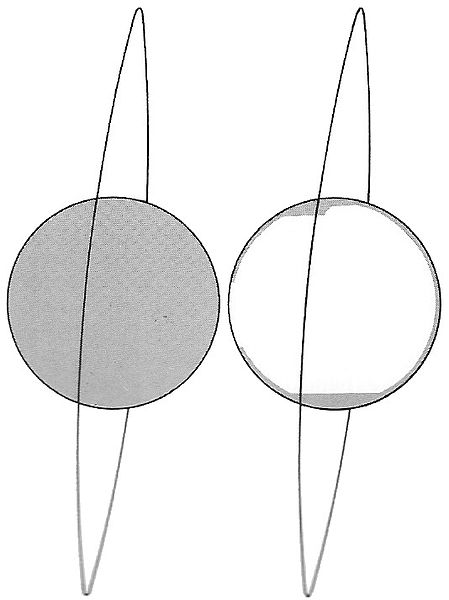Lunar Orbiter 4 was a robotic U.S. spacecraft, part of the Lunar Orbiter Program, designed to orbit the Moon, after the three previous orbiters had completed the required needs for Apollo mapping and site selection. It was given a more general objective, to "perform a broad systematic photographic survey of lunar surface features in order to increase the scientific knowledge of their nature, origin, and processes, and to serve as a basis for selecting sites for more detailed scientific study by subsequent orbital and landing missions". It was also equipped to collect selenodetic, radiation intensity, and micrometeoroid impact data.
Image taken by Lunar Orbiter 4, showing the Moon with a crescent Earth in the background. Enhanced by LOIRP.
Spacecraft orbit and photographic coverage on the near side (left) and far side (right)
The Lunar Orbiter program was a series of five uncrewed lunar orbiter missions launched by the United States from 1966 through 1967. Intended to help select Apollo landing sites by mapping the Moon's surface, they provided the first photographs from lunar orbit and photographed both the Moon and Earth.
Lunar Orbiter spacecraft
Lunar Orbiter camera (NASA)
A detail of an original image at the top, compared to a reprocessed version at the bottom created by LOIRP.
Image: NASM A19700318000 NASM2019 06087






